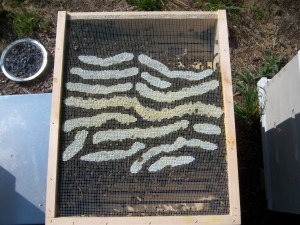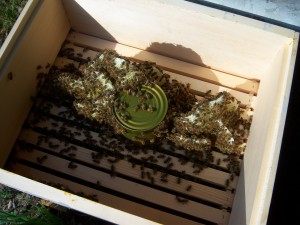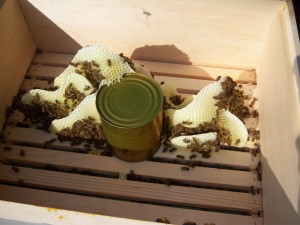Bee neglect
It has been an exciting spring so far. All three of my hives swarmed and a fourth swarm showed up from I know not where. The garden is getting prepared and planted. The chickens needed more space and we have two groups of peeps being raising.
What hasn’t gotten done is routine maintenance on my two year-old hives and one seven-week-old hive. There have been so many reports of swarms this year, I wonder if it was just inevitable. I thought that one could prevent swarming by continuing to give the bees the space they needed to expand, but now I am not so sure.
My year-old hives both have two deep boxes for brood and have had medium honey supers on them for over a month. There was plenty of room for more brood in those boxes, but they swarmed anyway. I thought two deeps or three mediums was kind of standard for brood space and all that was needed after that were honey boxes.
So I am now wondering if maybe there are environmental conditions that result in swarming no matter what a beekeeper does.
A swarm can be good or bad. It is bad to loose half your bees, but a natural way to make a split if you can recapture your swarm. The bees take care of making the new queen and the timing is right because the bees handle the whole affair. The swarm is good if you want to expand the bee yard for the long term, but bad for honey. In two hives with 25,000 bees each, they are pretty busy with developing brood, but in a single hive of 50,000, you have twice as many to focus on gathering nectar and storing honey. I was hoping for a lot of honey this year. Maybe it won’t happen until next year now, but instead of two hives, I now have five (I gave two of the swarms away).
So about that neglect. Maybe being more attentive would have helped prevent swarming and maybe not. But in the meantime, the third hive of Georgia bees was installed in a single medium box, swarmed and has build lots of comb in the top feeding box which you can see through the screened inner cover. I looked at it yesterday, but didn’t deal with it yet. This colony swarmed just a week ago, so the new queen is not yet laying. I am tempted to add another brood box under the feeder and put a queen excluder on it and keep the feeder box and comb intact. I’m not sure if there is any brood in it, but I am hoping not. If not, then I might be able to harvest some comb honey later in the season. A bit non-standard, but what the heck.
The last two hives to deal with are the new hives from the swarms. The swarms that I kept were from my first hive and from the Georgia bee hive. Swarm one is now hive four, and it was also put into a medium box with a spacer box to hold the left over sugar syrup from the Georgia package. This is one of the standard ways to feed bees if not using a top box feeder. The problem is if you don’t look at the hive often enough, the bees will take advantage of that space and build free comb in it as you can see in the picture. I couldn’t keep this comb, so yesterday I did have to scrape this all out. There was no brood, but lots of almost ready to be capped nectar/honey. It pained me to have to scrape this all out, because of the wasted honey and even more so because of the wasted comb. I added new frames to that open box, but now the bees will have to rebuild all that comb. Bummer.



I think the bees are just programmed and would have made burr comb wherever they could; mine were building down from the inner cover into the top feeder even when they had frames with foundation open. I saved that gorgeous white wax for future use. Agree it’s a bummer to lose the honey, though.